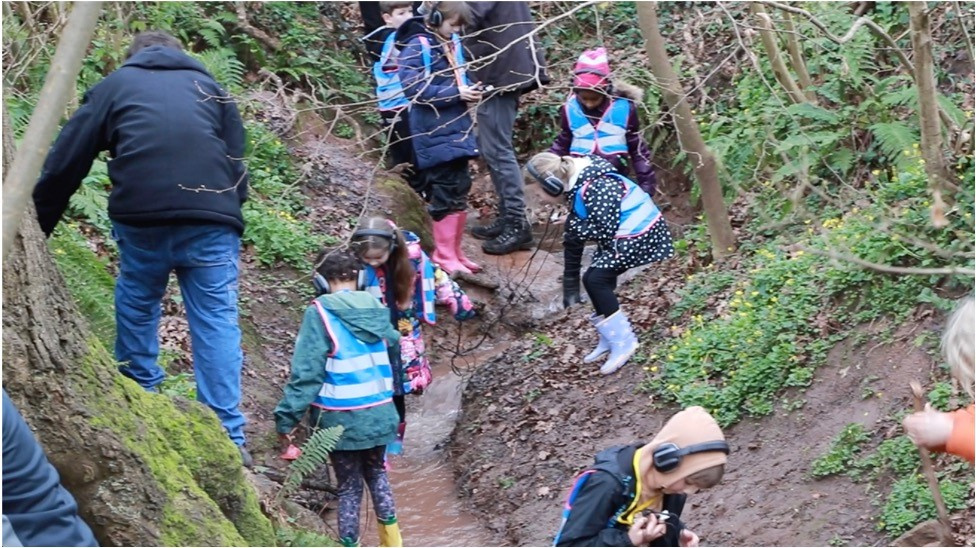
It’s a warm summer’s day and a class of Key Stage 2 children are spread along a river bank, headphones on and leads trailing down to submerged hydrophones in the water. The excitement is palpable and their faces light up as they start to tune in to the mysterious sounds of the river, from the ‘thunder’ where a small cascade rushes under a bridge to the bubbling and tinkling ‘Mario sounds’ in stiller areas.
These children have spent the day listening in nature as part of the interdisciplinary project 'Hear Water: building environmental empathy through deep listening', which combines listening, technology, science, ecopsychology, creativity and wellbeing.
We devised and tested a range of interactive and participatory learning activities for primary and secondary school teachers. These resources are suitable for school classrooms of around 30 children, combining cross-curricula activities, wellbeing and the outdoors.
Our guides show teachers how to implement the activities, with exercises to try and resources to tap into to enable more interactive learning. Teachers can work with their classes to:
- Learn outdoors to listen and sense nature in new ways
- Explore nature connectedness through listening games and activities
- Build hydrophones (underwater microphones) to listen underwater
- Collect underwater sounds to generate artistic outputs with music technology
- Gather scientific water data on aquatic biodiversity
- Compose and improvise with sounds from nature
Climate change is undeniably one of the biggest crises facing our planet today and, at the same time, one of the most challenging areas to teach ‘in the context of a restrictive educational system’ (Glackin et al, 2023, p. 12). ‘Policy guidance […] is lacking’ (Innes, 2023, p. 25) and teachers are constrained by a knowledge-focused, subject-based curriculum (Glackin et al, 2023).